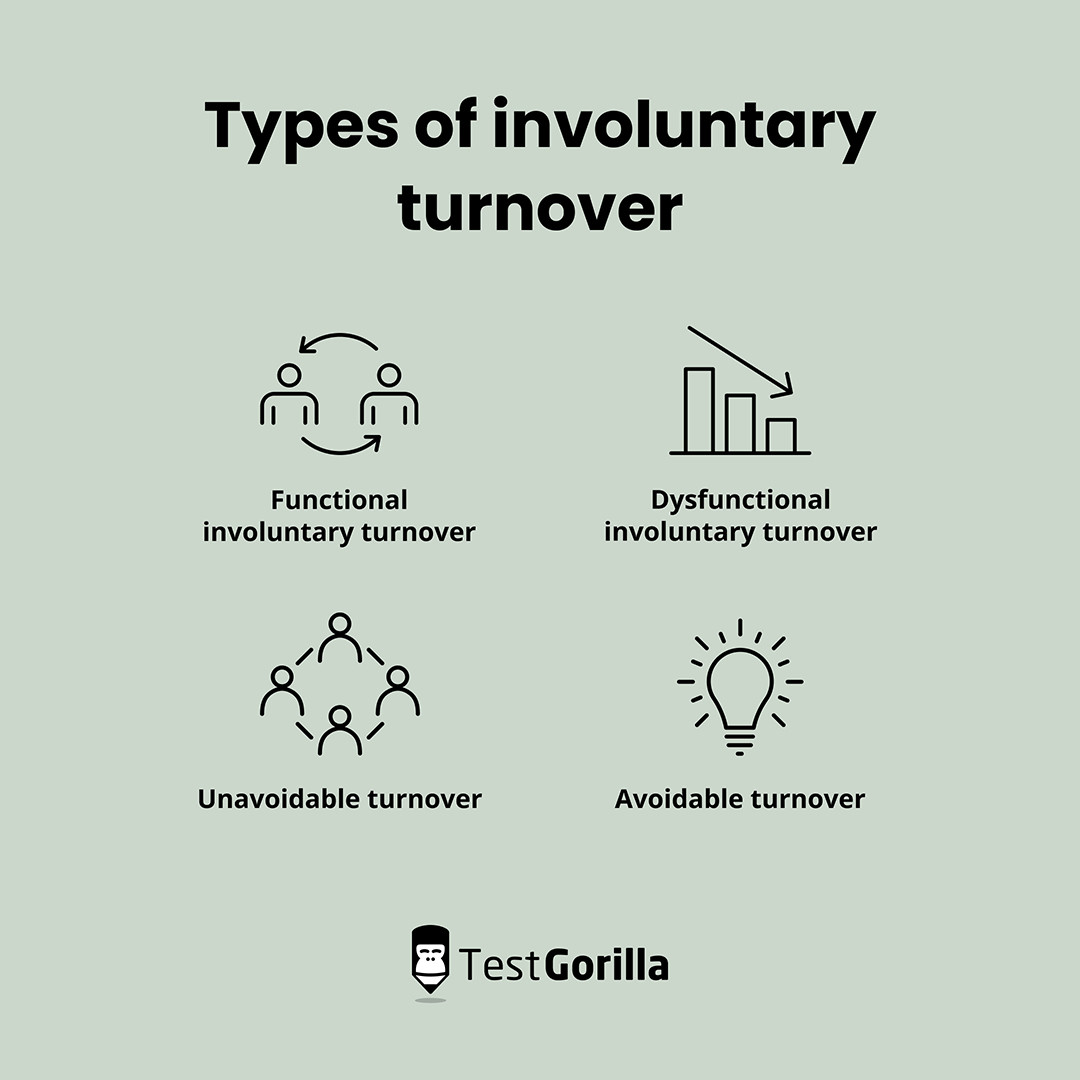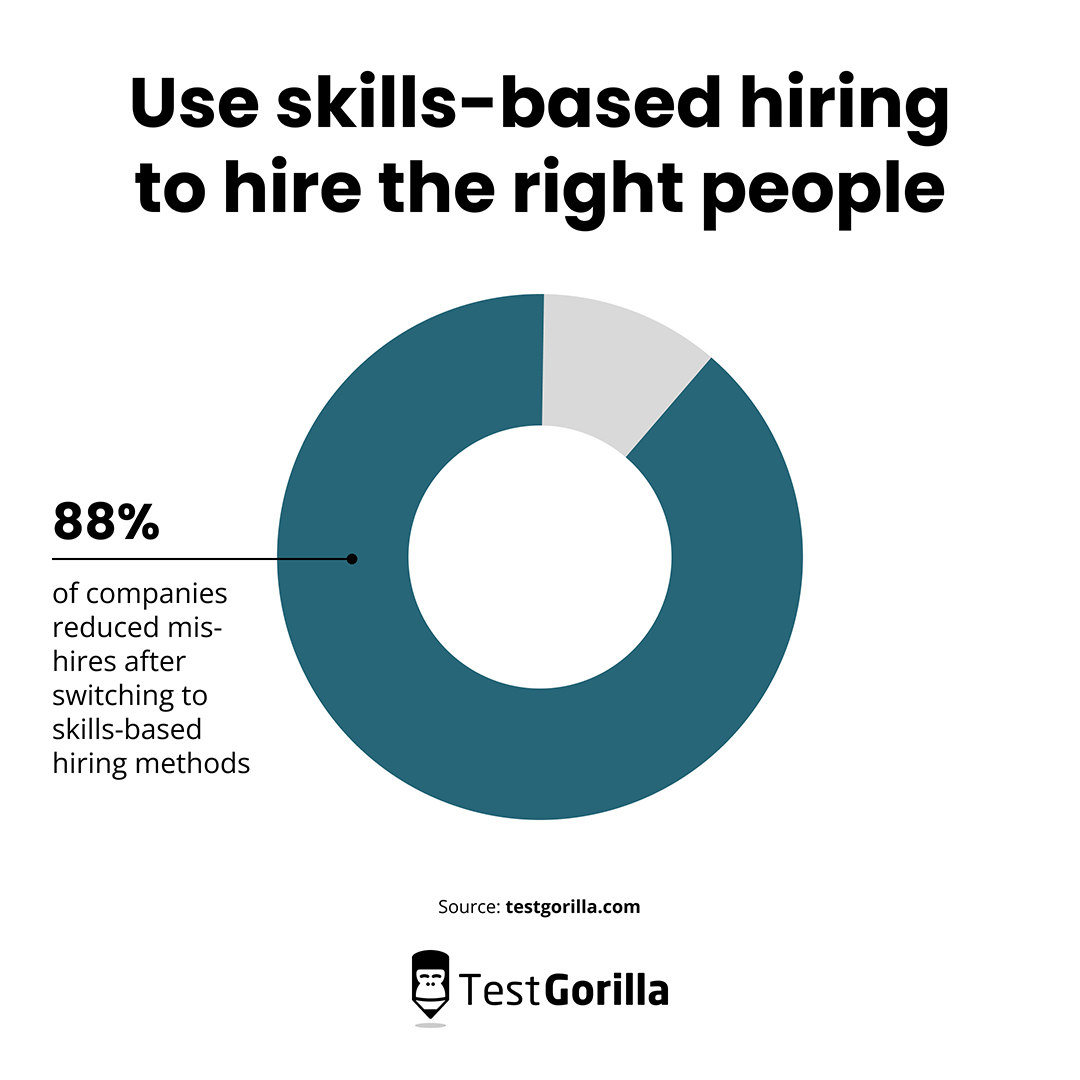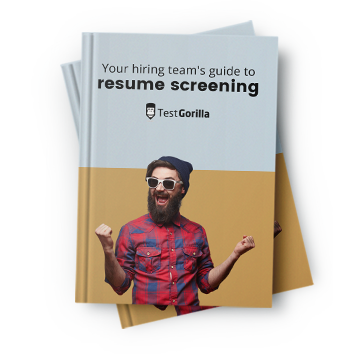Managing a spike in involuntary turnover is not easy.
Whether it’s a round of layoffs or a spate of performance-related involuntary separations, this type of turnover causes stress for your employees and costs you time and money in hiring and productivity loss.
Strong leadership and people management skills are necessary to right the ship, but you also need to understand the causes of involuntary turnover to act accordingly.
In this blog, we cover how to calculate involuntary turnover, the reasons for involuntary turnover, and employee retention strategies and tips to help reduce it.
We’ll start with the basics, but you can skip straight to the tips if you’re well-versed in the costs and causes of involuntary turnover.
Table of contents
- What is involuntary turnover?
- The 5 main causes of involuntary employee turnover
- How to calculate your involuntary turnover rate
- The cost of involuntary employee turnover
- How to reduce involuntary turnover: 35 best practices to reduce the likelihood of forced separation and layoffs
- Take a skills-based approach to reducing involuntary turnover in your organization
What is involuntary turnover?
Involuntary turnover occurs when a company terminates a worker’s employment, rather than the employee leaving by choice. The reasons for involuntary turnover include:
Mis-hires or a “bad fit”
Poor performance
Layoffs due to downsizing or restructuring
Involuntary vs voluntary turnover
Voluntary turnover is the reverse of involuntary turnover. Instead of the employer choosing to terminate a worker’s contract, the employee chooses to leave. Again, this could be for many reasons, including:
Retirement
Inadequate compensation
Relocation to a new city
Types of involuntary turnover
There are four main types of involuntary turnover you need to know.
1. Functional involuntary turnover
When turnover is “functional,” that means it doesn’t damage your ability to make money.
An example is letting go of a poor performer so that you can hire someone with a more appropriate skill set.
2. Dysfunctional involuntary turnover
Dysfunctional involuntary turnover, on the other hand, impacts your ability to function as a business. An example is when you fire high-performing employees due to misconduct.
Downsizing and layoffs can be functional or dysfunctional involuntary turnover depending on the context.
Layoffs may be functional if downsizing one team allows you to pour more resources into higher-performing teams. They may be dysfunctional if you handle them badly and create more issues in your organization.
3. Unavoidable turnover
Even the best organizations encounter unavoidable involuntary turnover, or turnover that is not caused by poor management. For example, many organizations were forced to lay off workers during the coronavirus pandemic, particularly in hospitality.
4. Avoidable turnover
Avoidable involuntary turnover is when poor decisions by management lead to firing or laying off employees. Examples include:
Inefficient hiring leading to mis-hires
Lack of accountability encouraging misconduct
Inefficient processes causing poor business performance, necessitating layoffs
In this blog, we show you how to prevent avoidable turnover and manage unavoidable turnover.
Tip: To learn more about the other types of employee turnover, bookmark our deep dive into the topic.
Why should you track your involuntary turnover?
Many HR teams track their turnover rates alongside their employee retention rate, but why should you separate voluntary and involuntary turnover in your workforce tracking?
A combined turnover metric doesn’t tell you which employees are leaving your organization or why.
If most of your turnover is voluntary and stems from issues with pay, this suggests your compensation package needs an overhaul.
It’s a very different situation when you mostly have involuntary turnover as a result of poor performance, which suggests you’re hiring people who don’t have the right skills to thrive in your organization.
Knowing how to calculate involuntary turnover and identify the causes helps you choose which employee retention trends to follow and can help you reduce the costs associated with involuntary turnover (which we cover below).
The 5 main causes of involuntary employee turnover
There are five main causes of involuntary turnover in organizations.
Causes of involuntary turnover | You let employees go because they… |
1. Incompatibility | Are a bad fit for the organization – for example, because they don’t share the company values |
2. Poor performance | Do not have the right skills for the role and underperform |
3. Misconduct | Break ethical codes of conduct, such as falsifying data to make their department’s bottom line appear larger |
4. Downsizing | Belong to a team or function deemed non-essential or unproductive |
5. Cost-cutting | Belong to a team or function the company can no longer afford to support |
Our tips below focus on addressing each of these involuntary turnover reasons – but first, how can you calculate your involuntary turnover rate?
How to calculate your involuntary turnover rate
Use our involuntary turnover formula to calculate your involuntary turnover rate:
Employee turnover rate in a given period = number of workers who leave involuntarily during period / number of workers at the beginning of the period × 100
Here’s how it works.
1. Decide the period to examine
Decide the period of time you want to examine. It’s best to repeat these calculations regularly, so you might choose to look at involuntary employee turnover each:
Month
Quarter
Year
2. Gather data for the start of that period
Count the employees that were on your payroll on the first day of the period. Looking at payroll ensures you don’t count anyone twice, like if they are let go in one period but leave the next.
3. Count departing employees who left involuntarily
Count the original employees who are not on the payroll at the end of the period and who did not resign or retire.
This might be because they were fired for misconduct, let go in a round of layoffs, or were let go in their probation period because they weren’t a good fit.
Divide this figure by the total number of employees at the start of the period, and then multiply by 100 to calculate the involuntary turnover rate.
How to calculate involuntary turnover rate: An example
You decide to calculate your company’s involuntary turnover rate for one year. On January 1, you have 250 employees on the payroll. By December 31:
10 employees retired
15 quit
You let go 15 due to poor performance
You laid off a team of 15
You hire 20 new people
That makes for 25 voluntary departures and 30 involuntary ones. The number of new hires is not relevant.
That makes the involuntary turnover formula: 30 / 250 × 100 = 12% involuntary employee turnover. So now, how do you decide whether you’re facing high turnover rates? Let’s look at benchmarking reports to understand where our 12% involuntary employee turnover rate stands.
What is a good involuntary turnover rate?
A Society for Human Resource Management benchmarking report shows the average involuntary turnover rate is 6%.[1]
This is consistent with iMercer figures, which show that the average involuntary turnover rate in the US is 4.8%, significantly lower than the average voluntary turnover rate of 17.3%.[2]
However, just like for your overall employee turnover rate, what a good involuntary turnover rate for your business is varies based on several factors – firstly, your industry.
The tech industry has experienced particular turbulence, with more than 240,000 employees losing their jobs in 2023.[3]
Different functions may also have different involuntary turnover rates. Of executives who leave their roles, 30% do so involuntarily; among managers, this rises to 32%. The proportions are similar for office employees who leave their roles.
These statistics suggest that involuntary employee turnover generally constitutes one-third of overall turnover, but this may vary according to other factors.
The cost of involuntary employee turnover
Calculating turnover costs isn’t always straightforward, particularly when it comes to involuntary turnover.
As we’ve mentioned, involuntary employee turnover can be used to cut costs and prioritize profitable areas of the organization, and it, therefore, can be cost-saving when your company is in a tough position.
However, dysfunctional involuntary turnover in avoidable circumstances – like a spike in mis-hires or performance-related firing – can be very costly to your organization.
Examples of involuntary turnover costs | Summary |
Replacing employees | The cost of replacing an employee can be up to twice their annual salary[4] |
Becoming trapped in a cycle of mis-hiring and firing | Hiring costs like recruitment marketing and productivity loss snowball over time |
Increased employee attrition rate | You lose employees and don’t or can’t replace them, perhaps because they’re leaving too frequently or because your employer brand has taken a hit |
Below, we show you how to prevent avoidable involuntary turnover and manage unavoidable turnover.
How to reduce involuntary turnover: 35 best practices to reduce the likelihood of forced separation and layoffs
From the above, we know there are five overall strategies for how to reduce involuntary turnover:
Reducing mis-hires
Supporting high performance
Preventing misconduct
Managing involuntary turnover thoughtfully
Cutting hiring costs
Here are the 35 tips you need to serve each of these priorities.
35 best practices to reduce involuntary turnover: Summary
Here’s a summary of our tips, organized by the strategic priority they help with. Remember to read each tip in full to see an example of involuntary turnover strategy in action.
Reduce mis-hires
Use skills-based hiring to hire the right people
Apply culture add tests to create teams that are diverse and cohesive
Create an inclusive culture
Make avenues for career growth clear from the outset
Support high performance
Hire a chief experience officer
Maintain motivation with competitive compensation
Support employees with strong benefits
Design professional development plans for all employees
Identify candidates for upskilling with skills test data
Ensure employees hit the ground running with good onboarding
Award individual budgets for employee training programs
Coach employees toward specific goals
Recognize and celebrate hard work
Don’t compromise on employee work-life balance
Offer flexible working
Create a clear remote work policy
Prevent misconduct
Check employee engagement scores in high-risk teams
Strengthen working relationships between collaborating teams
Use one on one meetings to investigate high-risk processes
Implement employee listening tools to listen to team members’ feedback
Set non-punitive policies for responding to employee feedback
Create avenues for upward feedback
Manage unavoidable downsizing thoughtfully
Practice clear, concise, and honest leadership communication
Explore opportunities for reskilling before downsizing
Try job rotation programs to settle candidates for redeployment
Protect your corporate reputation by offering outplacement support
Use exit processes to leave a positive impression of the organization
Conduct stay interviews with remaining employees
Use multiple metrics to assess employee flight risks
Allot extra time and budget to safeguarding employee wellbeing
Offer mental health support
Cut hiring costs
Identify opportunities for internal mobility
Input skills data into an internal talent marketplace
Use HR analytics to spot triggers for voluntary turnover
Implement phased retirement programs
1. Use skills-based hiring to hire the right people
The first step to reducing involuntary turnover is reducing the number of mis-hires in your organization. These are people whose skills don’t fit their role and whose personality and motivations don’t align with the rest of your workforce.
To hire the right people, use skills-based hiring methods like pre-interview skills-testing.
A massive 88% of companies reduced mis-hires after switching to skills-based hiring.
2. Apply culture add tests to create teams that are diverse and cohesive
Diversity in the workplace enables teams to understand and respond to a wide variety of business issues.
However, research shows that “personal diversity” (when employees don’t have common ground to lean on) can lead to a lack of trust and patience and more conflict.
Use culture add testing to build diverse teams, reduce mis-hires, and check that recruits share their teams’ underlying values.
Doing this successfully also boosts revenue. Diversity is consistently linked to higher business performance, which reduces the likelihood of involuntary employee turnover through layoffs.
3. Create an inclusive culture
Mis-hires can also result from a lack of inclusion. Employees might believe in your mission, but if managers say they are “asking too much” by requesting reasonable accommodations, they may become part of your involuntary turnover statistics.
Avoid this by creating an inclusive culture where every employee gets an equal opportunity to participate. For instance, educate all managers on topics like disability inclusion.
4. Make avenues for career growth clear from the outset
McKinsey research shows that 41% of employees quit due to lack of career development and advancement.[5]
This is relevant to involuntary employee turnover because a lack of connection to the advancement opportunities available at an organization can impact employees’ motivation. They might not quit, but they could stop trying and eventually be let go as a result.
To avoid this, make career growth opportunities clear to new employees during onboarding.
5. Hire a chief experience officer
After mis-hires, the next common cause of involuntary turnover is poor performance. Lower the likelihood of poor performance across your workforce by adding a member to your leadership team to oversee employee experience.
Managing how employees feel about their work can make a real impact: Employees are 47% more likely to perform well if their leaders take this approach.[6]
6. Maintain motivation with competitive compensation
Studies suggest that compensation strategies have a strong, positive effect on employee engagement.[7]
An engaged employee is a more effective employee; to maintain strong performance, strengthen your employee compensation strategy.
Ensure you pay your employees a fair market rate for their skills – or, if you can’t afford to do this, sweeten the deal with perks like stock options or other employee benefits. Speaking of which…
7. Support employees with strong benefits
It’s not always possible to pay employees a highly competitive salary. This is why employee benefits are an asset.
Employee benefits like a comprehensive healthcare plan and generous family leave can also make employees more engaged in their work and therefore perform better.
This is likely why high-performing companies are 22% more likely to offer at least one work-life benefit than low-performing ones.[8]
8. Design professional development plans for all employees
We know a lack of career development opportunities is a big motivator for employees leaving. It can also be a huge demotivator for employees who stay, leading to “quiet quitting” and eventually becoming candidates for involuntary turnover.
Avoid this by creating professional development plans for all employees, outlining:
What their goals are
How their current role fits into this
What skills training they require
9. Identify candidates for upskilling with skills test data
Switching to a skills-based approach in hiring also enables you to identify candidates for upskilling.
This might be at the point of hiring: identifying weak spots in a new recruit’s skillset from their initial tests and enrolling them in training courses to help.
You should also test your current employees. Nearly 60% of the workforce already need new skills to do their jobs effectively.
Pay particular attention to high-involuntary turnover teams to identify the employees upskilling might save from termination.
10. Ensure employees hit the ground running with good onboarding
A good onboarding process is essential to reduce involuntary turnover. Companies with a formal onboarding program see 50% greater employee retention and 62% better productivity among new hires.[9]
Some general tips:
Personalize preboarding to build strong team bonds
Assign “buddies” for new recruits to shadow
Show you value recruits’ opinions
11. Award individual budgets for employee training programs
You can also boost engagement by putting employees in charge of their own employee training programs.
At TestGorilla, we give every employee the equivalent of 3% of their salary to spend on training programs of their choice.
Suggest focus areas for employees based on their skills test results. Organizations that match their HR processes to their employees’ skills needs:
Boost engagement by 50%
Reduce training costs by 50%
Increase productivity by 40%[10]
12. Coach employees toward specific goals
Setting big goals for employees won’t motivate them on its own. You may find that employees become disengaged if they are not supported in their pursuit of their goals, and their productivity could decline.
Avoid this by providing employee coaching opportunities, with senior leaders providing advice to junior employees as they pursue a career transition, such as a promotion or learning a new skill.
13. Recognize and celebrate hard work
Rewarding employees when they perform well is another important aspect of performance management.
Employee recognition programs show employees that their efforts do not go unnoticed and provide social incentives for engagement.
Provide a range of initiatives, from formal ones like employee of the month programs to more casual shout-outs – for example, a company Slack channel dedicated to peer-to-peer recognition.
14. Don’t compromise on employee work life balance
It’s tempting, especially when experiencing productivity loss from involuntary turnover, to demand your remaining employees work more to compensate.
However, employee work life balance is the foundation of strong performance, and supporting it reduces the likelihood of your involuntary employee turnover worsening.
In fact, employees who believe they have a good work-life balance are shown to work 21% harder than those who don’t.[11]
15. Offer flexible working
One way to promote employee work-life balance is offering flexible working options.
Flexible work schedules, such as flextime or a compressed work week, enable employees to take ownership of their work and manage it alongside their social lives, their healthcare, and any caregiving responsibilities.
The benefits are huge: 39% of flexible workers said they experienced benefits for their mental health as a result.
16. Create a clear remote work policy
To support a flexible work schedule, many organizations allow employees to work remotely. This can also be great for productivity and performance but requires a strong remote work policy.
This should outline:
Expected working hours
Guidelines for screen time
Where they can work from and for how long (it may affect your taxes for employees to work abroad for longer than one month)
What equipment they need, and what you will provide
17. Check employee engagement scores in high-risk teams
Low engagement is a risk factor for misconduct because employees may not feel an ethical investment in their roles.
Low engagement also leads to poor performance: Companies that score in the top quartile for employee engagement are 23% more profitable than those in the bottom quartile.
Monitor employee engagement metrics such as absenteeism in teams where misconduct is a particular concern – for instance, those handling sensitive customer data.
18. Strengthen working relationships between collaborating teams
Behavioral risk experts at Harvard Business Review say a lack of collective identity between teams working on the same project can be a trigger for misconduct.[12]
Avoid this by strengthening working relationships between collaborating teams. For example, Harvard’s experts created an email signature that showed the names and faces of all the team members working towards a goal, successfully creating a collective identity.
19. Use one-on-one meetings to investigate high-risk processes
In teams where misconduct cases have arisen – for instance, falsifying performance data – behavioral risk experts recommend one on one meetings with remaining team members to discuss the processes at most risk of falsification.
Probe for weak points in these processes: Which steps do employees not see the purpose of and therefore feel tempted to skip or falsify?
20. Implement employee listening tools to listen to team members’ feedback
To strengthen accountability processes in high-risk teams, use employee listening tools to collect feedback.
For instance, you could use an “always-on” feedback tool. This is simply a portal where employees can log spontaneous comments or constructive criticisms of the processes they use.
Employees might fear being ostracized by their teams for pointing out misconduct, so consider anonymizing this feedback.
21. Set non-punitive policies for responding to employee feedback
Collecting employee feedback can sometimes be challenging because of the stigma around failure or “snitching” and the fear of termination.
This negatively impacts performance and increases the likelihood of employees covering up mistakes or falsifying data. Harvard research shows that a company culture of shame around failure makes employees less likely to learn from their mistakes.[13]
To avoid this, employ someone from outside the affected team to investigate, emphasizing improvement rather than punishment.
22. Create avenues for upward feedback
Another way to reduce misconduct is creating an environment that encourages upward feedback from junior employees to senior leaders.
As we’ve discussed, misconduct is often a result of employees feeling a lack of ownership over the processes they use and a simultaneous pressure to meet targets.
If employees feel safe to critique unhelpful processes and question their leaders’ target-setting, you remove these risk factors.
23. Practice clear, concise, and honest leadership communication
Unavoidable involuntary employee turnover is a fact of life. Stop it snowballing by learning how to lay off employees with care.
Start with good leadership communication. Experts recommend this should be:
Clear
Concise
Unequivocal[14]
State clearly that they are being laid off and the timeframe of the process.
For example: “We’re are very sorry, but due to an internal restructuring project based on changing customer demands, we’re terminating your employment at the end of next month.”
24. Explore opportunities for reskilling before downsizing
You may be able to limit the negative impact of layoffs by exploring opportunities for reskilling before downsizing.
Look at the teams you’re considering laying off and identify any employees with adjacent skills to higher-impact areas of your workforce. If possible, offer reskilling support for them to transition into new roles internally instead of laying them off.
25. Try job rotation programs to settle candidates for redeployment
Employees may not know whether they want to take an opportunity for internal transfer until they’ve tried it. Consider allowing them to do this through a job rotation program.
This is a program whereby employees “rotate” between different functions at the same level of seniority to test out their fit for each role.
26. Protect your corporate reputation by offering outplacement support
Stop layoffs denting your corporate reputation by offering laid-off employees outplacement support. Help employees find another role – for example, by allowing them to work flexibly during their notice period so they can go to job interviews.
Four out of five Americans say outplacement support reduces the likelihood of them badmouthing a company after layoffs. It also safeguards your employer brand.
27. Use exit processes to leave a positive impression of the organization
Many people think offboarding is just about handover and preventing data breaches, but it’s also about leaving a positive impression of your organization. This saves your reputation among current employees, clients, future candidates, and potential boomerang workers.
During your exit surveys or exit interviews, offer support to departing employees and leave them with as positive an impression as possible, even though their termination is not their choice.
28. Conduct stay interviews with remaining employees
Layoffs put strain on remaining employees: 74% of employees say that layoffs negatively impact their productivity, and 69% say their company’s product or service declines in quality too.
This can cause involuntary employee turnover issues to become entrenched if you don’t act.
Conduct stay interviews with remaining employees to assess their wellbeing and offer support to maintain their performance and retain them long-term.
29. Use multiple metrics to assess employee flight risks
Compare qualitative insights from stay interviews with other HR data, such as absenteeism statistics and key performance reviews, to assess if you have any employee flight risks on your hands.
This enables you to offer support to the employees who need it and prevent further productivity loss that could send your business into an unhelpful spiral.
30. Allot extra time and budget to safeguarding employee wellbeing
Downsizing can sour team dynamics. Research shows it worsens nine out of 12 working conditions, exacerbating supervisor aggression and reducing friendship formation.[15]
To prevent this, allocate extra time and budget to safeguarding employee wellbeing – for example, by offering:
Extra team bonding days
Discounts on spa and health treatments
An open-door company policy among managers to support staff
31. Offer mental health support
A survey of Indian employees named uncertainty the number one factor in increasing workplace stress levels.
Although strong communication limits uncertainty during layoffs, you can’t eliminate it completely.
Help employees manage their stress by offering support for mental health in the workplace with:
Counseling sessions on their healthcare plan
An allowance for mental health days
Team workshops about managing stress
32. Identify opportunities for internal mobility
Finally, you may be able to avoid – or at least limit the extent of – layoffs by cutting costs in areas like hiring.
Hiring external candidates can be costly due to the time and expense of:
Recruitment marketing
Testing and interviewing new candidates
Evaluating applications
Offering bonuses or higher salaries
Reduce these costs by promoting internal mobility and looking for candidates for open roles in-house.
33. Input skills data into an internal talent marketplace
A huge asset when promoting internal mobility is an internal talent marketplace.
This is a software or basic spreadsheet showing the skills available in your workforce, so you can “shop” for candidates for open roles.
For best results, populate it with data from candidate and employee skills testing to streamline the internal hiring process and find well-vetted candidates.
34. Use HR analytics to spot triggers for voluntary turnover
Voluntary turnover can force you to expend time and money replacing employees, exacerbating many of the issues that lead to both involuntary and voluntary turnover.
For example, a spike in voluntary turnover could depress morale and performance; hiring costs could also add to other financial issues and lead to layoffs.
Use HR analytics to identify triggers for voluntary turnover and intervene before this butterfly effect takes place.
35. Implement phased retirement programs
Finally, rushing to fill a role could cause you to make a mis-hire that ultimately leads to involuntary turnover. In some cases, this can be managed by offering phased retirement for older workers.
This benefits employees by smoothing the transition into retirement; it benefits employers by limiting productivity loss and giving you more time to find the right candidate.
Take a skills-based approach to reducing involuntary turnover in your organization
In this blog, we’ve examined:
The involuntary turnover definition and how this differs from voluntary turnover
How to calculate involuntary turnover in your business
Involuntary turnover reasons
Tips for how to reduce involuntary turnover and managing involuntary turnover when it happens
It’s clear that understanding the skills you need from employees and the skills your employees have not only helps you make better decisions about unavoidable involuntary turnover but minimizes the chances of these issues arising in the first place.
To understand more about how skills testing makes layoffs fairer, read our blog about why people of color are statistically more vulnerable to layoffs.
If you’re ready to hire a workforce with the best chance of thriving, use our Culture Add test to hire the best.
Sources
1. “SHRM Customized Human Capital Marketing Report”. (2017). SHRM. Retrieved December 12, 2023. https://www.shrm.org/ResourcesAndTools/business-solutions/Documents/Human-Capital-Report-All-Industries-All-FTEs.pdf
2. “Results of the 2023 US and Canada Turnover Surveys”. (September 21, 2023). Mercer. Retrieved December 12, 2023. https://www.imercer.com/articleinsights/workforce-turnover-trends
3. Stringer, Alyssa; Corrall, Cody. (December 11, 2023). “A comprehensive list of 2023 tech layoffs”. TechCrunch. Retrieved December 12, 2023. https://techcrunch.com/2023/11/30/tech-layoffs-2023-list/
4. McFeely, Shane; Wigert, Ben. (March 13, 2019). “This Fixable Problem Costs U.S. Businesses $1 Trillion”. Gallup. Retrieved December 12, 2023. https://www.gallup.com/workplace/247391/fixable-problem-costs-businesses-trillion.aspx
5. De Smet, Aaron, et al. (July 18, 2022). “The Great Attrition is making hiring harder. Are you searching the right talent pools?”. McKinsey & Company. Retrieved December 12, 2023. https://www.mckinsey.com/capabilities/people-and-organizational-performance/our-insights/the-great-attrition-is-making-hiring-harder-are-you-searching-the-right-talent-pools
6. “Improve the Employee Experience”. Gartner. Retrieved December 12, 2023. https://www.gartner.co.uk/en/human-resources/insights/employee-experience
7. Pranitasari, Diah. (August 10, 2019). “The Effect Of Compensation And Working Environment To Employee Engagement”. OSFHOME. Retrieved December 12, 2023. https://osf.io/68u39/
8. Held, Justin. (May 11, 2022). “The Secret Benefits Sauce for Engaged, Productive Employees”. International Foundation of Employee Benefit Plans. Retrieved December 12, 2023. https://blog.ifebp.org/benefits-for-engaged-productive-employees/
9. Sibisi, Sinazo; Kappers, Gys. (April 5, 2022). “Onboarding Can Make or Break a New Hire’s Experience”. Harvard Business Review. Retrieved December 12, 2023. https://hbr.org/2022/04/onboarding-can-make-or-break-a-new-hires-experience
10. Jost, Gregor, et al. (May 23, 2022). “Using skill gap assessments to help future-proof your organization”. McKinsey & Company. Retrieved December 12, 2023. https://www.mckinsey.com/capabilities/people-and-organizational-performance/our-insights/the-organization-blog/using-skill-gap-assessments-to-help-future-proof-your-organization
11. Rampton, John. (February 29, 2016). “How Work Life Balance Can Keep Your Employees Happy and Your Business Healthy”. Inc. Retrieved December 12, 2023. https://www.inc.com/john-rampton/how-work-life-balance-can-keep-your-employees-happy-and-your-business-healthy.html
12. Scholten, Wieke; de Vries, Femke; Besieux, Tijs. (June 2022). “A Better Approach to Avoiding Misconduct”. Harvard Business Review. Retrieved December 12, 2023. https://hbr.org/2022/05/a-better-approach-to-avoiding-misconduct
13. Harrell, Eben. (June 2020). “Maybe Failure Isn’t the Best Teacher”. Harvard Business Review. Retrieved December 12, 2023. https://hbr.org/2020/05/maybe-failure-isnt-the-best-teacher
14. Knight, Rebecca. (April 7, 2020). “How to Manage Coronavirus Layoffs with Compassion”. Harvard Business Review. Retrieved December 12, 2023. https://hbr.org/2020/04/how-to-manage-coronavirus-layoffs-with-compassion
15. Frone, Michael R; Blais, Ann-Renee. (February 2020). “Organizational Downsizing, Work Conditions, and Employee Outcomes: Identifying Targets for Workplace Intervention among Survivors”. Int J Environ Res Public Health. Retrieved December 12, 2023. https://www.ncbi.nlm.nih.gov/pmc/articles/PMC7037986/
Related posts
Hire the best candidates with TestGorilla.
Create pre-employment assessments in minutes to screen candidates, save time, and hire the best talent.
Latest posts
The best advice in pre-employment testing, in your inbox.
No spam. Unsubscribe at any time.

Hire the best. No bias. No stress.
Our screening tests identify the best candidates and make your hiring decisions faster, easier, and bias-free.
Free resources
Anti-cheating checklist
This checklist covers key features you should look for when choosing a skills testing platform
Onboarding checklist
This resource will help you develop an onboarding checklist for new hires.
How to find candidates with strong attention to detail
How to assess your candidates' attention to detail.
How to get HR certified
Learn how to get human resources certified through HRCI or SHRM.
Improve quality of hire
Learn how you can improve the level of talent at your company.
Case study: How CapitalT reduces hiring bias
Learn how CapitalT reduced hiring bias with online skills assessments.
Resume screening guide
Learn how to make the resume process more efficient and more effective.
Important recruitment metrics
Improve your hiring strategy with these 7 critical recruitment metrics.
Case study: How Sukhi reduces shortlisting time
Learn how Sukhi decreased time spent reviewing resumes by 83%!
12 pre-employment testing hacks
Hire more efficiently with these hacks that 99% of recruiters aren't using.
The benefits of diversity
Make a business case for diversity and inclusion initiatives with this data.

























